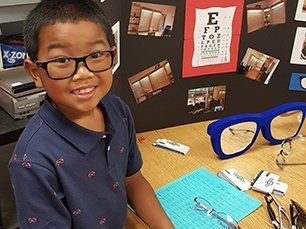Comprehensive Eye Care for Your Entire Family
The first step to a comprehensive eye exam is the completion of a comprehensive health history form. This form provides us with important details of your current and previous health status which allows our optometric physicians to determine risk factors that may be linked to your eye health. A complete history is required every three years.
The next step is preliminary testing. Our clinic is equipped with several different diagnostic instruments that aid in your assessment. We routinely use three of these instruments during each comprehensive eye exam. The first instrument provides us with an estimate of your glasses prescription. The second instrument measures your eye pressure. The last instrument screens your peripheral and central vision. Additional tests may be required and can conveniently be performed on the same day at your doctor's request.
Finally, your optometric physician will have all the basic tools necessary for your comprehensive eye exam. He or she will begin by reviewing your health history and ask you to discuss any vision-related concerns that you are experiencing. Next, an assessment of your need for vision correction will occur. Afterward, an examination of the front surface and the inside structures of your eye will be performed. Your optometric physician will summarize their findings. He or she will educate you with any eye health concerns and you will be provided with your glasses prescription.
If you are interested in contact lenses, please learn more about a contact lens evaluation.

Additional Testing
Learn more about additional testing that may be required during your comprehensive eye exam.
- Dilation - Medications are used to enlarge your pupils so your optometric physician can have a comprehensive view of the retina, optic nerve, and blood vessels. Most internal eye diseases are painless. Therefore, a full view of the back of your eye is essential
- Fundus Photography - This instrument provides us with a digital image of the various structures of your eye which may reveal undetected eye disease
- Humphrey Visual Field - This is a highly sensitive instrument used to evaluate any dysfunction of the optic nerve including your central and peripheral vision
- Optical Coherence Tomography (OCT) - This instrument uses a sophisticated scanner laser to provide a cross section image of the tissue lining the retina. Your optometric physician can map and measure the thickness of these areas which helps to diagnose and treat eye disease
